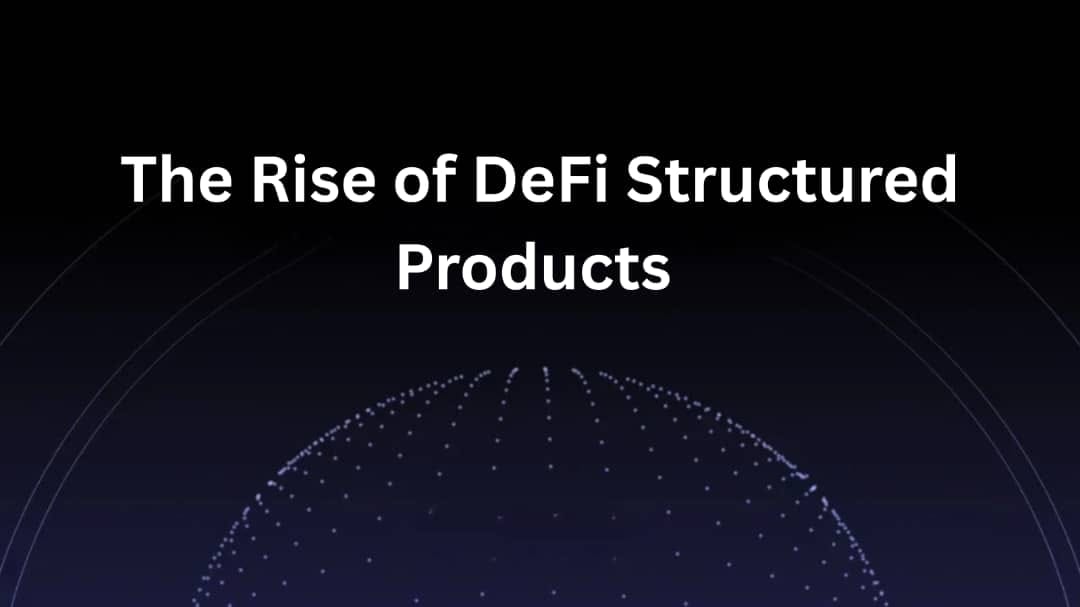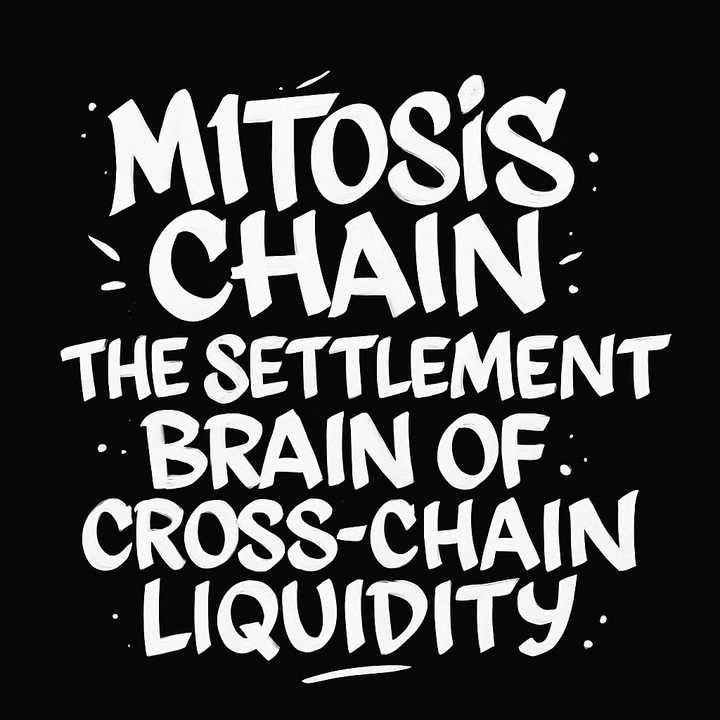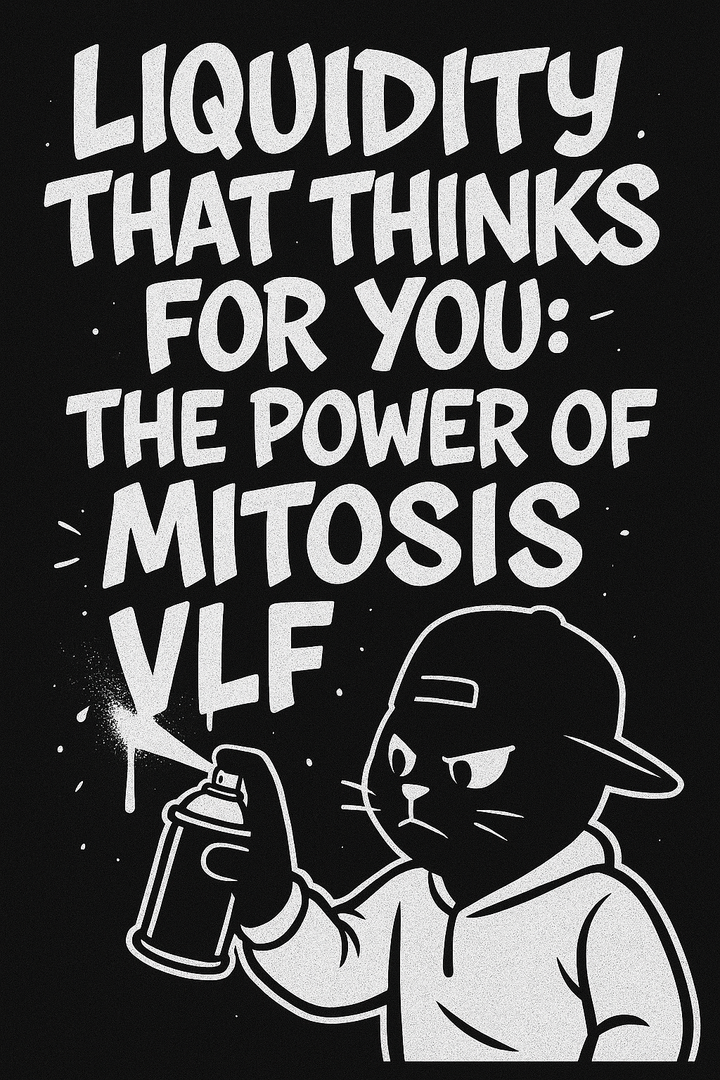The Rise of DeFi Structured Products

Introduction
Decentralized Finance (DeFi) has emerged as one of the most transformative trends in the financial sector, leveraging blockchain technology to create a more open, transparent, and accessible financial ecosystem. Among the various innovations within DeFi, structured products have gained significant attention for their ability to offer tailored investment strategies that cater to diverse risk appetites and investment goals. This article delves into the rise of DeFi structured products, exploring key concepts such as tranches, principal-protected vaults, and auto-rebalancing ETFs, while also examining their role in achieving risk-adjusted returns.
1. Understanding DeFi Structured Products
What Are Structured Products?
Structured products are pre-packaged investment strategies that typically involve derivatives and are designed to meet specific investor needs. They can provide exposure to various asset classes, including equities, fixed income, commodities, and currencies, while also incorporating features that can enhance returns or mitigate risks. In the context of DeFi, structured products leverage smart contracts and blockchain technology to automate processes, ensuring transparency and efficiency.
1.1 The Evolution of DeFi
DeFi has evolved rapidly since the launch of Ethereum in 2015, which enabled the creation of smart contracts. These self-executing contracts allow for the automation of financial transactions without the need for intermediaries. The DeFi ecosystem has grown to include a wide range of applications, including decentralized exchanges (DEXs), lending platforms, yield farming, and liquidity pools. As the ecosystem matures, the introduction of structured products represents a natural progression, providing investors with more sophisticated tools to manage their portfolios.
2. Key Types of DeFi Structured Products
2.1 Tranches
Tranches are investment products that are divided into different layers, each with varying levels of risk and return. The term "tranche" comes from the French word for "slice," and it refers to the way these products are sliced into segments. Each tranche has its own risk profile, allowing investors to select the one that aligns with their risk tolerance.
2.1.1 How Tranches Work
In a typical tranche structure, the cash flows generated by an underlying asset are distributed among the different tranches based on a predetermined hierarchy. For example, in a collateralized debt obligation (CDO), the senior tranche receives payments first, followed by the mezzanine tranche, and finally the equity tranche. This structure allows for the creation of products that can cater to both conservative and aggressive investors.
2.1.2 Example of Tranches in DeFi
In the DeFi space, platforms like BarnBridge have introduced tranche-based products that allow users to hedge against price volatility. BarnBridge offers two tranches: the "yield" tranche, which is more exposed to risk and offers higher returns, and the "hedge" tranche, which provides more stability and lower returns. This allows investors to choose their level of exposure based on their risk appetite.
2.2 Principal-Protected Vaults
Principal-protected vaults are designed to safeguard the principal investment while providing opportunities for returns. These products typically combine low-risk and high-risk strategies to enhance potential gains without exposing investors to significant risks.
2.2.1 How Principal-Protected Vaults Work
Principal-protected vaults operate by allocating a portion of the investment to low-risk assets, such as stablecoins or government bonds, while the remaining portion is invested in higher-risk assets, such as cryptocurrencies or DeFi protocols. The goal is to ensure that the principal amount is preserved while still allowing for potential upside.
2.2.2 Example of Principal-Protected Vaults in DeFi
Platforms like Yield Protocol offer principal-protected vaults that allow users to earn yield on their assets while ensuring that their initial investment is protected. By using a combination of stablecoins and yield-generating strategies, these vaults provide a safety net for investors who are wary of the inherent volatility in the crypto market.
2.3 Auto-Rebalancing ETFs
Auto-rebalancing ETFs (Exchange-Traded Funds) are investment funds that automatically adjust their asset allocations based on market conditions. This feature helps investors maintain their desired risk-return profile without the need for manual intervention.
2.3.1 How Auto-Rebalancing ETFs Work
Auto-rebalancing ETFs use algorithms to monitor the performance of the underlying assets and make adjustments as needed. For example, if one asset class significantly outperforms others, the ETF will sell a portion of that asset and reinvest the proceeds into underperforming assets to maintain the target allocation.
2.3.2 Example of Auto-Rebalancing ETFs in DeFi
In the DeFi space, platforms like TokenSets offer auto-rebalancing strategies that allow users to invest in a diversified portfolio of cryptocurrencies. These strategies automatically adjust the asset allocation based on predefined rules, helping investors capture market opportunities while managing risk.
3. Benefits of DeFi Structured Products
1. Tailored Investment Strategies
One of the primary advantages of DeFi structured products is their ability to offer tailored investment strategies. Investors can customize their portfolios to meet specific risk-return profiles, allowing for more personalized investment approaches. This flexibility is particularly appealing in the rapidly changing and often volatile cryptocurrency markets, where a one-size-fits-all approach is rarely effective.
2. Increased Accessibility
DeFi structured products fundamentally lower entry barriers to sophisticated investment strategies that were traditionally accessible only to institutional investors or high-net-worth individuals. Thanks to the decentralized and permissionless nature of DeFi platforms, retail investors worldwide can now participate in complex products like tranches and auto-rebalancing ETFs directly from their wallets, without intermediaries or minimum investment thresholds.
3. Transparency and Automation
Blockchain technology and smart contracts enable complete transparency and automation in DeFi structured products. Investors can verify underlying assets, transaction histories, and the logic governing product mechanics anytime. Smart contracts automate portfolio rebalancing, tranche settlements, and yield distribution, reducing human error, operational costs, and the risk of fraud.
4. Enhanced Yield Potential
DeFi structured products often combine multiple income-generating strategies such as yield farming, lending, and options selling within a single product. This layering approach can enhance the overall yield beyond what is available through traditional standalone investments. For instance, principal-protected vaults might simultaneously provide capital protection and leveraged exposure to high-yield farming assets.
5. Diversification Benefits
By packaging a basket of underlying assets into one aggregated investment, structured products can offer better diversification and risk mitigation compared to individual asset holdings. Some auto-rebalancing ETFs use algorithmic strategies to diversify exposure across different tokens, liquidity pools, or even chains, thereby reducing idiosyncratic risk.
4. Risks and Challenges of DeFi Structured Products
Despite their many advantages, DeFi structured products also carry unique risks and challenges that investors should carefully consider.
1. Market Volatility and Impermanent Loss
Cryptocurrencies are inherently volatile compared to traditional assets. This volatility can impact structured products differently depending on their structure. For example, equity tranches in a tranche product can suffer significant losses during downturns. Additionally, liquidity provision can expose investors to impermanent loss — a phenomenon where the relative value of deposited assets changes due to price fluctuations affecting pooled assets.
2. Complexity and Understanding
Structured products have complex payout structures and risk-return profiles, often combining several underlying protocols and financial instruments. This complexity can make it difficult for retail investors to fully understand the risks, especially as DeFi products also have technical complexities involving blockchain and smart contract interactions.
3. Smart Contract Vulnerabilities
DeFi structured products are implemented using smart contracts, which are subject to bugs and exploits. A vulnerability in one part of the product’s codebase can lead to partial or total loss of funds. Although many projects conduct audits and use formal verification tools, no system is entirely immune to risk.
4. Regulatory and Legal Uncertainty
The regulatory environment around DeFi is evolving, and structured products straddle complex legal boundaries. Some jurisdictions may consider these products securities or derivatives, leading to potential compliance challenges or restrictions. This uncertainty can impact product availability and investor protections.
5. Liquidity Risks
While many DeFi structured products aim to be liquid and tradable, liquidity can dry up during market stress, creating difficulties in exiting positions or redeeming principal promptly. Some products also involve lock-up periods or withdrawal restrictions.
5. The Role of DeFi Structured Products in Risk-Adjusted Returns
Risk-adjusted returns are a fundamental concept in finance, measuring how much return an investment generates per unit of risk taken. DeFi structured products provide several mechanisms to optimize this metric for investors.
1. Tranches for Risk Segmentation
By segmenting risk into tranches, structured products allow investors to choose their preferred risk-return profile explicitly. Conservative investors may opt for senior tranches with principal protection but limited upside, while risk-tolerant investors can target equity tranches with high potential returns but greater risk of loss. This customization improves capital efficiency and portfolio construction.
2. Principal Protection for Downside Mitigation
Products like principal-protected vaults reduce downside risk by allocating assets defensively while enabling some participation in upside through exposure to risky assets or yield generation. By doing so, these products help preserve capital during adverse market conditions and limit drawdowns that impact long-term portfolio growth.
3. Auto-Rebalancing to Maintain Desired Exposure
Auto-rebalancing ETFs help maintain the desired risk profile automatically by selling overheated assets and buying undervalued ones. This disciplined approach reduces behavioral biases such as panic selling or greed-driven buying. Over time, rebalancing enhances risk-adjusted returns by capturing mean reversion and reducing volatility.
4. Yield Enhancement Through Layered Income Strategies
Many structured products combine income strategies like lending, yield farming, and options to generate higher returns than traditional assets of comparable risk. This layering generates more consistent cash flows, smoothing returns despite market volatility.
6. Examples of DeFi Structured Products and Platforms
1. BarnBridge
BarnBridge is one of the pioneering projects in DeFi structured products, focusing on risk tokenization. Their Risk Tranches protocol tokenizes volatility and fixed income risk into junior and senior tranches, allowing investors to “hedge” price volatility or target high yields depending on their choice. BarnBridge effectively brings traditional finance concepts like collateralized debt obligations (CDOs) to DeFi.
Website: https://barnbridge.com/
2. Idle Finance
Idle Finance offers auto-compounding and auto-rebalancing vaults that allocate user funds automatically to optimize yield. The platform also provides risk tranching where users can select “safe” or “risk” tranches to adjust their exposure to underlying yield-generating strategies.
Website: https://idle.finance/
3. Ribbon Finance
Ribbon Finance specializes in structured products involving options and volatility, providing yield enhancement through options selling strategies while protecting capital to a degree. Their vaults combine options premium collection with principal protection techniques.
Website: https://ribbon.finance/
4. TokenSets
TokenSets offers auto-rebalancing portfolios managed by algorithms or decentralized autonomous organizations (DAOs). These allow investors to gain diversified exposure with automated risk management strategies, ranging from momentum trading to dollar-cost averaging.
Website: https://www.tokensets.com/
5. Pendle Finance
Pendle Finance tokenizes future yield, enabling investors to trade rights to yields generated by DeFi protocols. This creates new ways to structure fixed income-like instruments and develop risk-return profiles similar to traditional fixed income structured products.
Website: https://pendle.finance/
7. How to Evaluate DeFi Structured Products
Evaluating DeFi structured products requires a multidisciplinary approach, combining financial analysis, technical due diligence, and understanding of market conditions.
- Product Structure: Understand how returns and risks are distributed between tranches or vaults. Look into the payout schedules, caps, floors, and conditions.
- Underlying Assets: Analyze the composition and volatility of underlying assets or strategies involved.
- Smart Contract Security: Audit results, bug bounty programs, and reputation of the development team provide insights into security.
- Platform Liquidity: Check liquidity pools’ depth, historical withdrawal ease, and lock-up conditions.
- Historical Performance: While past performance is not indicative of future results, it can provide context on volatility and drawdowns.
- Regulatory Compliance: Determine the legal status and any restrictions applicable to the product.
- Transparency: The availability of on-chain data and user-friendly dashboards aids monitoring.
Conclusion
The rise of DeFi structured products marks a remarkable milestone in the evolution of finance blending traditional financial engineering with the disruptive power of blockchain technology to deliver innovative, accessible, and customizable investment options. Products like tranches, principal-protected vaults, and auto-rebalancing ETFs empower investors to navigate the volatile crypto markets more effectively by optimizing risk-adjusted returns. However, these products also come with complexities and risks that require careful evaluation and understanding.
As DeFi technology continues to mature and regulatory clarity improves, structured products hold the potential to become a mainstream investment choice not only within crypto but also in hybrid traditional-DeFi financial ecosystems. For investors seeking bespoke portfolio solutions combined with the efficiencies of decentralized automation, DeFi structured products represent a compelling frontier worth exploring.
Resources and Further Reading
- All You Need to Know About DeFi Structured Products | BingX
- What Are DeFi Structured Products? - Hedge3
- DeFi Structured Products - Medium
- BarnBridge Documentation
- Idle Finance Documentation
- Ribbon Finance Blog
- TokenSets Tutorials
- Pendle Finance Whitepaper



Comments ()